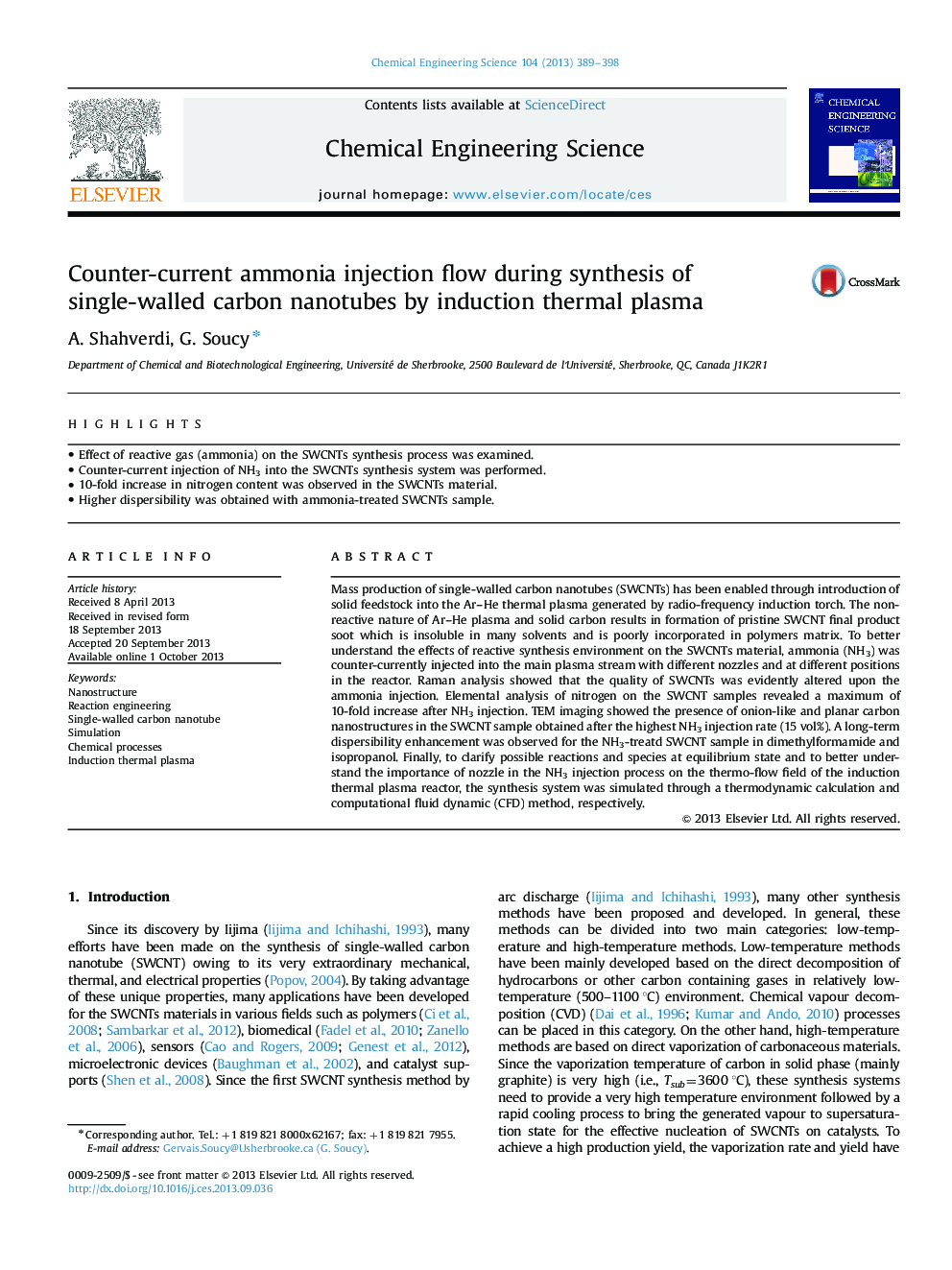| Article ID | Journal | Published Year | Pages | File Type |
|---|---|---|---|---|
| 6591528 | Chemical Engineering Science | 2013 | 10 Pages |
Abstract
Mass production of single-walled carbon nanotubes (SWCNTs) has been enabled through introduction of solid feedstock into the Ar-He thermal plasma generated by radio-frequency induction torch. The non-reactive nature of Ar-He plasma and solid carbon results in formation of pristine SWCNT final product soot which is insoluble in many solvents and is poorly incorporated in polymers matrix. To better understand the effects of reactive synthesis environment on the SWCNTs material, ammonia (NH3) was counter-currently injected into the main plasma stream with different nozzles and at different positions in the reactor. Raman analysis showed that the quality of SWCNTs was evidently altered upon the ammonia injection. Elemental analysis of nitrogen on the SWCNT samples revealed a maximum of 10-fold increase after NH3 injection. TEM imaging showed the presence of onion-like and planar carbon nanostructures in the SWCNT sample obtained after the highest NH3 injection rate (15Â vol%). A long-term dispersibility enhancement was observed for the NH3-treatd SWCNT sample in dimethylformamide and isopropanol. Finally, to clarify possible reactions and species at equilibrium state and to better understand the importance of nozzle in the NH3 injection process on the thermo-flow field of the induction thermal plasma reactor, the synthesis system was simulated through a thermodynamic calculation and computational fluid dynamic (CFD) method, respectively.
Keywords
Related Topics
Physical Sciences and Engineering
Chemical Engineering
Chemical Engineering (General)
Authors
A. Shahverdi, G. Soucy,
